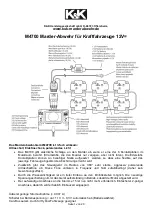
1A-11 Engine General Information and Diagnosis:
Description of Electric Throttle Body System Calibration
S5JB0A1101010
ECM calculates controlled opening of the throttle valve on the basis of the completely closed throttle valve position of
the electric throttle body system. The completely closed position data is saved in memory of ECM. However, the
completely closed position of the throttle valve of the electric throttle body system (signal voltage from throttle position
sensor when throttle is completely closed) differs one from the other depending on individual differences of the throttle
valve and throttle position sensor. As such individual differences must be taken into account for controlling the throttle
valve, it is necessary to register the completely closed throttle valve position data in ECM. When such data is
registered in ECM, it is saved in RAM (memory) of ECM and used as the base data for controlling the throttle valve.
This data is cleared, when any of the works described in “Precautions of Electric Throttle Body System Calibration: ” is
performed.
Also, after replacement of the throttle body and/or accelerator pedal position (APP) sensor assembly, the completely
closed position data in memory of ECM must be cleared once and a new one must be registered, or ECM cannot
judge the complete closure position properly.
For the procedure to register such data, refer to “Electric Throttle Body System Calibration: in Section 1C”. (After the
completely closed position data is cleared, ECM, for the first time only, opens and closes the throttle valve for about 5
seconds after the ignition switch is turned ON position, for registration of the completely closed throttle valve position.
If the engine is started during this registration process, such symptom as “longer cranking time” or “slow rise of
revolution speed immediately after start-up” may occur. However, turning OFF the ignition switch once and restarting
will set correct registration.)
Generator Control System Description
S5JB0A1101011
Generator Control System consists of a generator (1), electric load current sensor (7) (for J20 engine) located in the
fuse box No.1 (4) and ECM (5).
ECM controls generated electricity (adjusting voltage of IC regulator (2)) so that it is suitable for the engine and electric
load conditions. When the electric load increases quickly, generation load of the generator increases quickly and
causes idling to change. To prevent this, ECM makes generated electricity volume vary gradually to stabilize idling.
Also, it reduces the engine load caused by temporary increase in electricity generation to cope with the engine
condition (such as when accelerating).
Operation
ECM controls the generated voltage of the generator using “C” terminal (generator control terminal) duty, based on
following information.
• Engine condition (ECT, vehicle speed, engine speed, TP, etc.) (9)
• Battery voltage (ECM backup power voltage) (10)
• Electric load condition (blower motor, rear defogger, head lights, radiator fan, A/C, etc.) (11)
• “FR” terminal output (field coil (3) control duty) which indicates the operation rate (electricity generation condition) of
the generator.
Then the generator uses “C” terminal duty to regulate the adjusting voltage of the IC regulator with the field coil control
duty so as to control its generated voltage (“B” terminal output voltage).
(For more information of the generated voltage, refer to Charging System in Section 1J.)
Furthermore, with the J20 engine, the generation condition of the generator is controlled to the optimum level by the
electric load current sensor (7) which detects the electrical load condition (current consumption) linearly even when a
sudden electrical load variation occurs and thus the engine load is reduced.
www.CarGarage.ir
www.CarGarage.ir
www.CarGarage.ir
















































